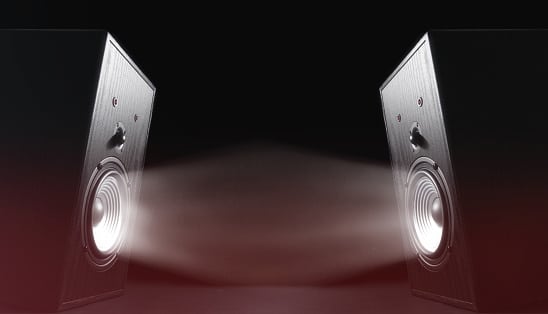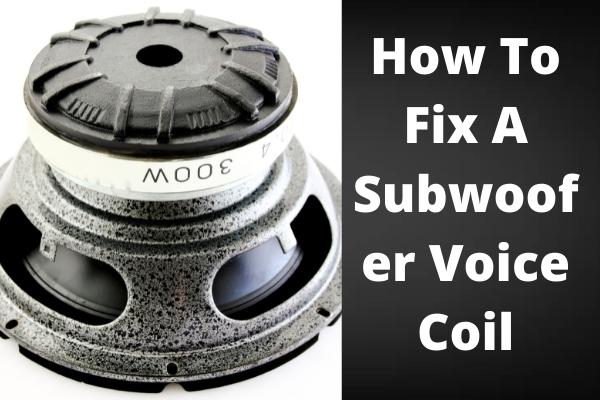
INTRODUCTION
You’ve just set up your home theatre and are eager to hear the awesome sound quality. But wait a minute – there’s something not quite right. What’s wrong? Well, chances are you need to adjust your subwoofer settings.
Do you love the deep, powerful sound of a good subwoofer? If so, you’re not alone. Since sound is essential and art, a subwoofer can excite your music and movies. But if you’re not getting the best sound from your subwoofer, you’re missing out on much of the fun.
Using subwoofers is an excellent approach to enhancing the audio of your movies and music. The secret to getting your best response is understanding what the subwoofer is capable of regarding positioning, connection, and settings.
In this article, we will be dishing out some tips on how to get the best sound out of your subwoofer. We’ll cover everything from understanding frequency response to adjusting settings on your receiver. By following our simple tips, you’ll be able to fine-tune your audio system and enjoy rich, powerful sound that will blow you away.
How Does a Subwoofer Work?

Do you know how a subwoofer works? Let’s take a look.
The sound produced when you play music consists of so many frequencies. A subwoofer is designed to handle the low frequencies, and that’s why they’re important—they give you that deep, rich bass you can feel.
The key to getting the best sound out of your subwoofer is to put it in the right spot. You want to ensure that it’s not too close to walls or other objects because that will muffle the sound. And you also want to ensure that it’s in a spot where it can get some air circulation because if it gets too hot, it will start to distort the sound.
How To Get the best Sound Out Of a Subwoofer
You want your subwoofer to rock your world, and we’re here to help you make that happen. Luckily, getting a good sound out of your subwoofer is determined by three major factors. You want to know that, right? Follow through as we discuss the key factors determining the sound a subwoofer will produce.
Positioning: You may not know this, but your subwoofer placement impacts the sound it produces. Although it is very difficult to position correctly, it is one of the most important things you need to know. The placement of sound in a room may make a significant effect because sound travels through spaces like ping pong balls within a metal box. There are several placements for your subwoofer, but all these depend on the sound you need.
Corner placement: This has proven to be the simplest means of getting 6×10 of your bass output without an amplifier. A subwoofer will experience reflecting problems at shorter wavelengths the closer you place it to a wall. To achieve your best sound if you stay in a small room, your placement should be 3 inches away from the wall. This is because sound echoes, and the wall/building serves as a medium.
Center placement is preferable when you want an equal output and response. Placing your subwoofer in the center of your room produces an equal output of bass (vibration) in all aspects of the room.
Other means of positioning your subwoofer to get the best sounds are:
1. Place your subwoofer between two primary speakers and ensure they are not facing each other.
2. Try the motion method. Move your subwoofer around the room until you get the perfect spot for your bass production.
3. The trunk is the best place to put your subwoofer in a car since it’s the largest space. When doing this, remember not to place your subwoofer in front of the major speaker.
Connections
The best approach to connect a subwoofer to a sound system will depend on the manufacturer and type. We have the left/right (stereo) connections; there are connectors also for the “line in” or “sub input,” as an example.
Cables are necessary since they transmit the signals from the audio. If the requirements for their use are not satisfied, cables may take up more noise or degrade along the way, depending on the context.
Your subwoofer’s output will be affected if your cables are not connected properly. It would help if you then were extremely careful while connecting your cables. Also, ensure to make any cables that must cross other wires do so at a 90-degree angle.
Your subwoofer settings
Once you’ve got the right spot and proper connection for your subwoofer, the next thing to do is to tune it. To make this happen, you must carefully perform the actions listed below.
Set the frequency before turning on your subwoofer. Setting your subwoofer’s frequency between 40Hz and 60Hz if you have a big floor-standing speaker as your primary speaker.
If you have a smaller speaker, set your frequency between 50Hz and 80Hz. If you have a satellite-size speaker, your frequency setup should be between 80Hz and 160Hz.
1. Power up your subwoofers and set the volume to your desired level.
2. If there is a phase control, adjust it. There is only a need for an adjustment if you are not satisfied with the sound output from your subwoofer.
3. Adjust your stereo audio equalizer. The increment should be done slowly for the stereo audio equalizer until you get your desired sound. To do this, ensure you’ve completely reduced the volume to nothing. Then gradually increase the volume until the desired level of sound is achieved. Never forget that there are no precise settings for this, depending on your sound choice.
Other factors that contribute to getting the best sound out of your subwoofers are;
· The quality of the song you are listening to.
· The power source: A lower voltage is susceptible to causing electronic damage to your subwoofer. The lower the voltage, the lower the activeness of your subwoofer and the lower the sound output produced. A suggested voltage range for your amplifier is from 50 to 150watts per channel. This may increase if you have a powerful amplifier capable of withstanding a stronger volt power.
CONCLUSION
Getting the best sound from a subwoofer is one of the best ways to enhance your listening experience. They influence the sound needed by an individual. Therefore, as was discussed in this article, it is crucial to keep the factors in check.
Frequently Asked Questions
What can I do to enhance the subwoofer’s audio quality?
Change your subwoofer’s position, frequency control, crossover, and equalization settings to have an improved and better sound. More bass may be produced by using quality cables.
Where is the right placement for my subwoofers?
The sound production for every room differs. More quality sound is produced if you place your subwoofer close to the wall with a gap of about 3 inches. Many prefer placing their subwoofers at the front of their rooms to make connections to their home theater easier.
Do I need a subwoofer amplifier?
Yes, you do if you are making use of a passive subwoofer. Why? Because aside from using an amplifier to regulate voltage, it controls the sound produced. When regulating your subwoofer’s volume, an amplifier increases the music frequency to make it louder or calmer.






